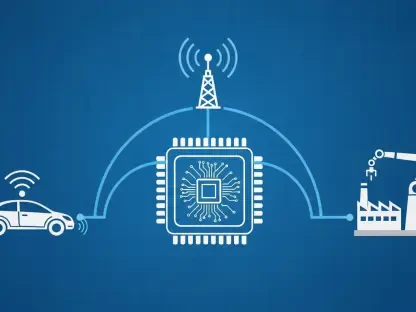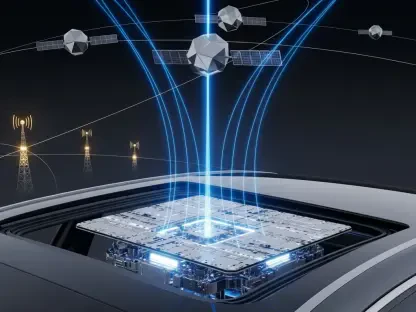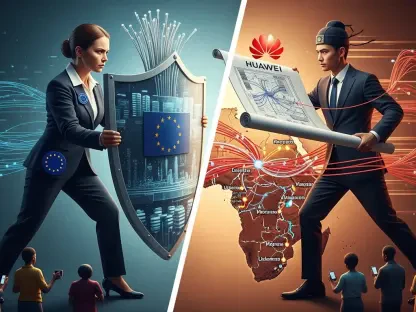The world of telecommunications is witnessing another revolutionary step with the advancement of F5.5G all-optical networks. As connectivity becomes a crucial element in everyday life, these networks emerge as a pivotal force in enhancing both digital and real economies. The promise of ultra-high-speed internet and low-latency connectivity is enabling new paradigms, particularly in conjunction with artificial intelligence (AI). This examination offers an insightful analysis of the evolution, core features, developments, and the potential future of F5.5G all-optical networks.
Unveiling the Technology
F5.5G all-optical networks represent a significant leap in telecommunication, emphasizing high-capacity and low-latency solutions. Emerging from the continuous evolution of fiber-optic technology, these networks utilize advanced infrastructure to deliver seamless data transmission. The importance of this technology cannot be overstated as it facilitates rapid data exchange crucial for AI integration and other advanced applications. By providing a robust foundation, F5.5G networks are instrumental in supporting the increasingly complex demands of modern digital landscapes.
Foundations and Key Components
Ultra-High-Speed Broadband
At the heart of F5.5G networks is ultra-high-speed broadband, a feature vital for modern connectivity needs. This element enables transmissions at unprecedented speeds, supporting simultaneous activities without compromising quality. The significance lies in its ability to handle vast amounts of data swiftly, a non-negotiable requirement in the age of heavy digital traffic and bandwidth-intensive applications. With these capabilities, businesses and individuals experience seamless interaction, resulting in enhanced productivity and satisfaction.
Low-Latency Networking
In addition to speed, low latency is a cornerstone of F5.5G networks, critical for real-time applications. This characteristic minimizes delays in data transmission, ensuring an immediate response across platforms and devices. Whether in gaming, virtual reality, or AI-driven operations, low-latency networking ensures smooth, uninterrupted experiences, enhancing user interaction with digital systems. This technical advantage allows for more sophisticated applications and innovative projects, setting new standards in telecommunications efficiency.
Current Developments
The F5.5G landscape is witnessing significant developments driven by industry collaboration and technological breakthroughs. With the commercial deployment of networks offering speeds up to 10 Gbps, more than 70 global carriers are actively engaging in this technology. Innovations in optical transmission, such as 400G support, reflect the commitment to delivering reliable, high-capacity infrastructure. These advancements not only facilitate the adoption of AI applications but also accelerate shifts in consumer behavior and service expectations as seamless connectivity becomes the norm.
Applications and Use Cases
F5.5G all-optical networks find their utility across diverse sectors, affecting various applications and industries. In healthcare, for example, these networks enable telemedicine with real-time data exchanges crucial for critical consultations. They also support the automation and performance of smart cities, where efficient data handling is paramount for managing infrastructures. Furthermore, industrial applications benefit from AI and machine learning capabilities powered by F5.5G networks, allowing for more informed decision-making and process improvements.
Challenges and Hurdles
Despite their promise, F5.5G networks face several challenges that could inhibit widespread adoption. Technical limitations such as the infrastructural cost and complexity pose significant barriers. Regulatory landscapes and industry standards further complicate rapid deployment. Addressing these issues involves continuous policy reforms, investment in scalable infrastructure, and overcoming market hesitancies. Ongoing research and development focus on overcoming these limitations to unlock full potential.
Looking Forward
The future trajectory of F5.5G all-optical networks is promising, with potential breakthroughs on the horizon. Expectations revolve around further enhancing speed, reducing latency, and seamlessly integrating AI into everyday usage. This technology may usher in a new era where connectivity drives innovation across sectors, leading to enriched living standards and economic growth. The ongoing collaboration between telecom giants and tech innovators will likely carve pathways for revolutionary applications, shaping a future of interconnectivity.
Summary and Verdict
F5.5G all-optical networks present a fascinating evolution within telecommunications, characterized by significant technological strides and collaborative industry efforts. Their current capabilities illustrate remarkable progress, with potential for even greater advancements as hurdles are addressed. The advent of AI and its integration into network infrastructure further compounds their relevance, promising vast improvements across numerous fields. This technology has reshaped the landscape, setting the stage for enhanced connectivity and fueling momentum toward a more interconnected future.









